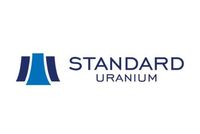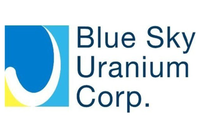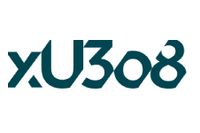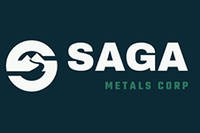Uranium Stocks: 5 Biggest Companies in 2025
What are the largest uranium companies in the world? Here's a breakdown of the biggest uranium stocks producing and exploring for the nuclear fuel.

After spending most of 2025's first quarter consolidating at the US$63 per pound level, spot U3O8 prices have been on an upswing, adding 13.62 percent between March 30 and May 14.
The uptick has been supported by improving utility demand, tariff clarity and resilient supply-demand fundamentals.
While broad market uncertainty added pressure for other commodities, uranium’s long term outlook prevented the energy fuel from suffering more declines at the start of the year's second quarter.
“As other asset classes faltered, uranium held its ground, supported by its structural supply-demand story, inelastic demand and insulation from tariff-related disruptions,” Jacob White of Sprott (TSX:SII,NYSE:SII) wrote in a recent uranium report.
As tailwinds propelled the spot price higher uranium, uranium equities also caught an updraft.
“Physical uranium and uranium equities continue to outperform over longer periods,” said White, who is the firm's exchange-traded fund product manager. “The strong five-year returns of physical uranium and uranium equities relative to broader commodity and equity benchmarks reinforce the metal’s role as a differentiated and strategic asset class.”
The list below provides an overview of the five largest uranium companies by market cap. All data was current as of May 15, 2025. Read on to learn about these top uranium stocks and their operations.
1. BHP (NYSE:BHP,ASX:BHP,LSE:BHP)
Market cap: US$128.63 billion
Mining major BHP owns and operates Australia’s Olympic Dam mine, considered one of the world's largest uranium deposits. While the site is included in the company’s Copper South Australia operations portfolio and copper is the primary resource extracted, the mine also produces significant quantities of uranium, gold and silver.
In the operational review for its third fiscal quarter of 2025, released in mid-April, BHP reported a decrease in uranium production year-over-year. The company's fiscal year-to-date uranium production totaled 2,180 metric tons, an 18 percent contraction from 2,674 metric tons in the first three quarters of fiscal 2024.
BHP is advancing its Olympic Dam expansion plan, which includes building a two-stage smelter, with a final decision due in 2026, and the US$5 billion Northern Water project, featuring a desalination plant and 600 kilometer pipeline.
The expansion targets a copper output of 650,000 metric tons annually by the mid-2030s, doubling its current production. While it was previously expected that BHP's uranium output would expand at a similar rate, causing fear of oversupply and low prices, BHP announced in February that this would not be the case.
Uranium production is expected to rise marginally, by roughly 1 percent.
Additionally, if the company decides to expand the hydrometallurgical plant to process uranium in the future, growth will still be smaller than expected due to lower uranium concentrations in feedstock ore from newly integrated assets Carrapateena and Prominent Hill.
2. Cameco (NYSE:CCJ,TSX:CCO)
Market cap: US$23.2 billion
Uranium major Cameco holds significant stakes in key uranium operations within the Athabasca Basin of Saskatchewan, Canada, including a 54.55 percent interest in Cigar Lake, the world's most productive uranium mine.
The company also owns 70 percent of the McArthur River mine and 83 percent of the Key Lake mill. Orano Canada is Cameco's primary joint venture partner across these operations.
Cameco also holds a 40 percent interest in the Inkai joint venture in Kazakhstan, with the rest held by the state company Kazatomprom. The mine produces uranium using in-situ recovery.
Weak spot uranium prices between 2012 and 2020 weighed heavily on pure-play uranium producers. In 2018, Cameco placed the McArthur River and Key Lake operations on care and maintenance, reducing the company's total annual uranium output from 23.8 million pounds in 2017 to 9.2 million pounds in 2018.
Improving market dynamics prompted the company to restart MacArthur Lake in 2022.
As a full nuclear fuel cycle provider, Cameco, in partnership with Brookfield Renewable Partners and Brookfield Asset Management, completed the purchase of Westinghouse Electric Company — a leading provider of nuclear power plant services and technologies — in November 2023.
In its Q1 update, Cameco reported steady operational and financial performance, with consolidated adjusted EBITDA of C$353 million and adjusted net earnings of C$70 million.
While uranium segment earnings declined due to timing of sales at its Inkai joint venture, average realized prices improved, supported by stronger fixed-price contracts and a favorable US dollar. For 2025, Cameco expects uranium production of 18 million pounds on a 100 percent basis at each of Cigar Lake and McArthur River/Key Lake.
After logistical issues at its Inkai joint venture in Kazakhstan weighed on production growth in 2024, Inkai suspended operations for about three weeks in January due to a directive from partner Kazatomprom. The revised 2025 production target is 8.3 million pounds on a 100 percent basis, with Cameco’s allocation at 3.7 million pounds. No deliveries from Inkai are expected until the second half of the year.
3. NexGen Energy (NYSE:NXE,TSX:NXE,ASX:NXG)
Market cap: US$3.18 billion
NexGen Energy, a company specializing in uranium exploration and development, is primarily focused on the Athabasca Basin. Its flagship project is the Rook I project, which includes the Arrow discovery.
The company also owns a 50.1 percent interest in exploration-stage company IsoEnergy (TSXV:ISO,OTCQX:ISENF).
In its Q1 results, NexGen reported a net loss of C$50.9 million, driven primarily by an impairment on its investment in IsoEnergy and ongoing exploration spending at its Rook I uranium project. Despite the loss, NexGen maintained a cash position of C$434.6 million, down from C$476.6 million at the end of 2024.
The largest component of the cash flow change was investing activities at C$34.3 million, mostly tied to C$28.1 million in exploration and evaluation expenses. The majority of this went toward technical work, permitting, and drilling at Rook I. NexGen also made a C$6.3 million follow-on investment in IsoEnergy.
Financing activity was limited, with C$557,000 raised from stock option exercises and C$6.8 million in restricted cash movements, resulting in a total cash outflow of C$41.9 million.
The company continues to hold a strategic uranium inventory of 2.7 million pounds of U3O8, valued at C$341 million. While NexGen does not currently generate production revenue, it remains well-capitalized to fund its development plans as it progresses Rook I toward potential construction and licensing milestones.
In late March NexGen reported its “best ever discovery phase intercept” at Rook I. As noted in a press release, drill hole RK-25-232 at the Patterson Corridor East zone intersected 3.9 meters of exceptionally high uranium readings within a larger 13.8 meter mineralized section starting at 452.2 meters depth.
4. Uranium Energy (NYSEAMERICAN:UEC)
Market cap: US$2.36 billion
Uranium Energy (UEC) has two production-ready in-situ recovery (ISR) uranium projects — its Christensen Ranch uranium operations in Wyoming and its Texas Hub and Spoke operations in South Texas — as well as two operational processing facilities. It plans to restart uranium production in Wyoming in August and resume South Texas operations in 2025.
The firm has built one of the largest US-warehoused uranium inventories, and in 2022 secured a US Department of Energy contract to supply 300,000 pounds of U3O8 as part of the country's move to establish a domestic uranium reserve.
UEC also holds a wide portfolio of uranium projects in the US and Canada, some of which have major permits secured. In August 2022, UEC completed its acquisition of uranium company UEX. That same year, UEC also acquired both a portfolio of uranium exploration projects and the Roughrider uranium project from Rio Tinto (ASX:RIO,NYSE:RIO,LSE:RIO).
In January, UEC increased its stake in Anfield Energy (TSXV:AEC,OTCQB:ANLDF) by acquiring 107.1 million shares for approximately C$15 million, at C$0.14 per share. The deal boosts UEC’s ownership to about 17.8 percent.
A month later, the company announced that it had achieved a key milestone by successfully processing, drying and drumming uranium at its Irigaray central processing plant in Wyoming.
Uranium concentrate produced from the plant will be shipped to the ConverDyn conversion facility in Illinois.
In March, UEC released results for the quarter ended on January 31, highlighting that additional wellfields at Christensen Ranch were on track to begin production in the coming weeks. It also finalized the acquisition of Rio Tinto’s Sweetwater plant, adding 4.1 million pounds per year of licensed capacity and establishing its third ISR hub-and-spoke platform.
Financially, UEC reported Q2 revenue of US$49.8 million from selling 600,000 pounds of U3O8 at US$82.92 per pound, generating US$18.2 million in gross profit. The company holds 1.36 million pounds in uranium inventory valued at US$97.3 million, with an additional 300,000 pounds to be acquired at US$37.05 per pound this December.
In May, UEC signed a memorandum of understanding with Radiant Industries to collaborate on strengthening the US nuclear energy value chain. As part of the agreement, UEC will supply domestically sourced uranium to Radiant. The partnership supports Radiant’s development of the Kaleidos portable nuclear microreactor, which is planned to be mass produced, aligning with growing national interest in small modular reactors and energy security.
5. Denison Mines (NYSEAMERICAN:DNN,TSX:DML)
Market cap: US$1.33 billion
Denison Mines is focused on uranium mining in Saskatchewan's Athabasca Basin. holding a 95 percent interest in the Wheeler River uranium project, which hosts the Phoenix and Gryphon deposits.
The company has significant landholdings in the basin through both operating and non-operating joint venture interests with uranium majors such as Orano and Cameco. This includes a 22.5 percent interest in Orano's McLean Lake mill and mine, the latter of which is expected to re-enter production in 2025.
In 2023, Denison completed a feasibility study for Phoenix, which hosts proven and probable reserves of 56.7 million pounds of uranium. The company is planning to use ISR for Phoenix and is targeting first production for 2027 or 2028. Denison also updated a 2018 prefeasibility study for the Gryphon deposit as an underground mine.
According to the company, both deposits have low-cost production potential.
In February, Denison announced that the Canadian Nuclear Safety Commission has scheduled public hearings for the Phoenix ISR project, which will take place in two parts, one in October and one in December.
The hearings are the final step in the federal approval process for the project’s environmental assessment and license to construct and prepare a uranium mine and mill.
On May 12, Denison released its results for the first quarter, noting that Phoenix had reached 75 percent completion for total engineering. If it receives approval later this year, Denison expects to begin construction for the Phoenix ISR operation in early 2026 and achieve production in 2028.
Meanwhile, site prep resumed at the McClean North deposit, which will be mined using the joint venture's proprietary SABRE mining method. Operations are on track to begin mid-year.
FAQs for uranium investing
What is uranium?
First discovered in 1789 by German chemist Martin Klaproth, uranium is a heavy metal that is as common in the Earth's crust as tin, tungsten and molybdenum. Named after the planet Uranus, which was also discovered around the same time, uranium has been an important source of global energy for more than six decades.
What country has the most uranium?
Australia and Kazakhstan lead the world in both terms of uranium reserves and uranium production. Australia takes first prize for the world's largest uranium reserves, representing 28 percent globally at 1,684,100 MT of U3O8. However, the Oceanic country ranks fourth in global uranium production, putting out 4,087 MT of U3O8 in 2022.
For its part, Kazakhstan controls 13 percent of global uranium reserves and leads the world in uranium production with 2022 output of 21,227 MT. Last year, Canada passed Namibia to become the second largest uranium producer, putting out 7,351 MT of U3O8 in 2022 compared to Namibia's 5,613 MT. The countries hold 10 percent and 8 percent of global reserves respectively.
Don't forget to follow us @INN_Resource for real-time updates!
Securities Disclosure: I, Georgia Williams, hold no direct investment interest in any company mentioned in this article.
- 5 Best-performing Canadian Uranium Stocks of 2025 ›
- Top 3 ASX Uranium Stocks of 2025 ›
- ASX Uranium Stocks: 5 Biggest Companies ›
- Top 10 Uranium-producing Countries ›
- Uranium Reserves: Top 5 Countries ›






